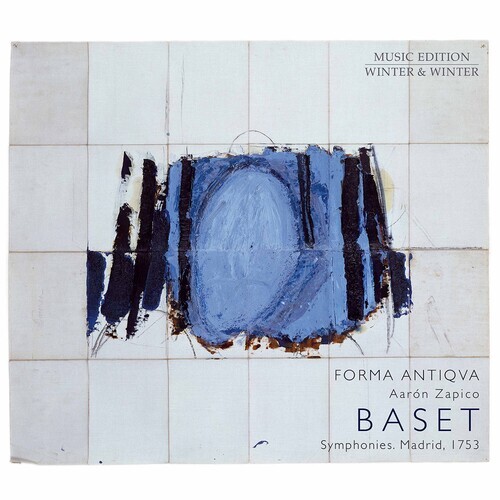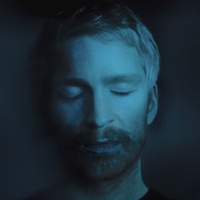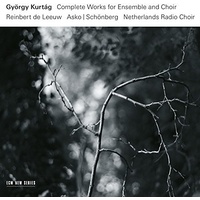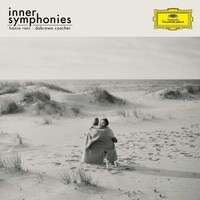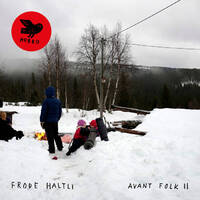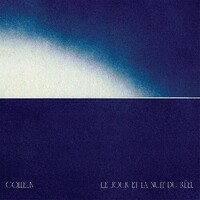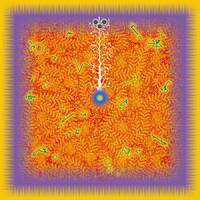Release date 2020
With Courage
One stumbles upon the indication « Allegro con valentía » [Allegro with courgage] at the end of this bundle of symphonies, right at the head of the tenth; a rhythmic, joyful and singing piece. Like its companions, before and after, an exhalation of affection. It is the first and so far only time that a composer demands « courage » in such a clear and direct way. I am captivated by this sincere request and imagination does the rest. I take it as a personal message that travels through time and puts the composer and performer in intimate contact.
I think that this is indeed how we should approach his symphonies and, ultimately, 18th century Spanish music: with courage.
At the end of 2015 I read with special pleasure a considerable amount of Spanish Baroque music, specifically for string ensembles. I conduct the premiere with Forma Antiqva of a trilogy of Tonadillas by Blas de Laserna [1751 - 1816] at the Fundación Juan March in Madrid and I need some pieces that serve as an overture and interlude. This is how those 11 symphonies by Vicente Baset come into my hands, which Ars Hispana, tireless ambassadors of our musical heritage, rediscovered and published. As so often, the score does not provide comprehensive information at first glance. But experience, when it comes to Spanish music from this period, has taught me that this austerity is apparent and that it is only necessary to scratch a little so that multiple colors appear. I play the music on the harpsichord, I hum it and imagine it in a thousand different ways. They taste like Nebra and Domenico Scarlatti but also like Telemann or Vivaldi. They more than fulfill my purpose of incidental music and arouse interest among those who hear and play them. For the first time Baset is being performed again, and I think we need to record this so that people can discover this fascinating composer.
In January 2016, a long road begins that will lead me to play and conduct this repertoire in various ways: from the minimum number of members to a symphonic team, from the specialized cycle to the season ticket. I put Baset alongside composers like Nebra, Blas de Laserna or Haydn himself and he stands up to any context.
In the centre of the city of Valencia, just a few metres from the cathedral, stands the church of San Esteban. There, on April 19, 1719, Don Pedro Galcerán baptized Vicente Baset, the third son of a farmer from Alboraya named Tomás Baset and his wife Juana Aixa. Destined to follow in his father's footsteps in the field, music casually bursts into his everyday life. When he is barely ten years old, his sister marries Pedro Antoneli, a violinist by profession and, most likely, the first musical master of the young Vicente. The fascination that this violin in right hands exerts on the child is quite understandable. The recent discovery of the heritage of Vicente Baset testifies the close relationship between the brothers-in-law, as the Antoneli family receives one of his best violins [a magnificent José Contreras]. The perseverance in the study and some undeniable talents for music, together with the invaluable help of Antoneli, make possible that twenty years later we find Baset's name in the list of the sixteen violin players of the Orchestra of the Real Coliseo del Buen Retiro. Without a doubt, the best orchestra in Spain at that time and a hive of magnificent creativity and influence for a young violinist eager for new experiences in the capital of the kingdom. In its string section were some of the most active violinists of the time who treasured a vast experience in Spanish music groups and theatres. Despite the limitations of his time, the transfer of knowledge, styles, fashions and techniques between the musicians is immeasurable.
The time of Baset in Madrid is the time of growth and development of its municipal coliseums. Although in the first half of the 18th century the theatres occasionally hired the musicians needed for the corresponding accompaniment, the greater demand associated with this evolution marks the consideration of the orchestra as a fixed element in the season of the theatre companies. It is, in fact, the time of the professionalisation and regularisation of these itinerant musicians under the orders of theatre directors such as Josef de Parra, Nicolás de la Calle or María Hidalgo, La Viuda [the widow]. The attraction of this new era, more stable and secure, could cause that, at the end of 1750, Baset joined the Compañía de María Hidalgo as first violin player and, very probably, he finished his career there. Once again, his inheritance casts a charming, albeit sparse, light on the life of Vicente Baset, as he leaves her a self-portrait and practically every interesting piece of jewellery found in his house. It seems that the relationship with the resolute María Hidalgo may have been more intimate than purely contractual.
The influence of the theatre, of the drama, is profound in the music of Vicente Baset. He absorbs, on the one hand, the good taste of the opera program designed by Farinelli for the Buen Retiro and, on the other, the experience in a company like María Hidalgo's, without the splendor of the court, but in constant contact with the pulse of the street.
Thus, and in spite of an invariable formal structure in the alternation of fast and slow movements, Baset's music flows in a deeply rhetorical and theatrical discourse. In addition to his undeniable ability to condense a well-founded, rhythmically and melodically perfectly developed idea into a few bars, he has the talent to surprise again and again with unexpected turns. The writing of these symphonies demonstrates an exhaustive knowledge not only of the medium [which works with respect to technical and linguistic resources of the orchestra] but also of the different styles resulting from his vast experience. The scenario moves between the popular minuet [tracks 6, 9 or 20] and the more Italian and agitated bow movement [tracks 12, 23 or 26]. Between the hypnotic pastoral [14 or 29] and the more painful adagio [5 or 28] or the shamelessly Vivaldian overture [1, 7 or 21], passing through a marked central European style [2, 18 or 22]. Music, in short, for all tastes.
The eleven symphonies first recorded on this album are part of a collection of works from 1753 and preserved in the musical library of Baron Carl Leuhusen, secretary to the Swedish Ambassador in Spain from 1752 to 1755. Hence his connection with Baset, whom he must have met at a Madrid sarao [dance and social evening] and commissioned this musical work to enrich his library. The musical tastes of Leuhusen, a man with broad cultural horizons, serve as a faithful portrait of what could be heard in Madrid at the beginning of 1750. Nine of the eleven works currently belong to the Stockholm Music Library and two to the Spanish National Library. However, the puzzle is not complete: one of the symphonies, possibly the first one as it is the only one dated on its frontispiece, is untraceable. For reasons that have not been disclosed, it was not possible for the Spanish National Library to acquire it at the time. I would like to think that it is only a matter of time before this work appears among the many music antique dealers, like the two symphonies that our library was recently able to acquire.
Like almost all the music of his period, Vicente Baset's symphonies require the active involvement of the performer. The score is in a sense naked despite the occasional and brief dynamic indications such as forte or piano, solo or tutti, or the corresponding tempo and affect indications at the beginning of each movement. It is necessary that the interpreter makes decisions, that he or she gets involved in the creation of this work. The composers of the time, including Baset, relied on the training of the musicians and called insistently for imagination and fantasy. The codes have changed but the nature of our emotions is the same. For this reason an interpreter is necessary: a contemporary translator of these emotions through historically enlightened interpretation. In the symphonies 2, 4 and 8, oboes and bassoons are added, since at that time these instruments were usually part of orchestras and ensembles and their use in the French style was the prevailing fashion. A percussion is added to the minuets [track 6, 17 and 20], highlighting their folkloric essence. The first violin surprises from time to time with free cadences on the marked fermatas, wouldn’t Baset himself want to flaunt his skills? I adopt the composer's intentions and new soli and tutti appear, giving homogeneity to the whole; articulations are expressed in the form of sighs, large phrases and short and painful-sounding notes; I colour the score here and there with dynamics, imagining a non-existent text; the accompaniment, rich and powerful, alternates to capture the full attention in every moment, even taking on the power of the melody in the Andante of Symphony 11 [track 25]. There are rules and connections, theory and practice, but also a strong sense of theatre and a sincere honesty towards our mission, which we at Forma Antiqva want to fulfil for the renewal of our musical heritage. There is, in short, courage.
– Aarón Zapico, July 2020
(025091026623)
| SKU | 025091026623 |
| Barcode # | 025091026623 |
| Brand | Winter&Winter |
Be The First To Review This Product!
Help other Birdland Records users shop smarter by writing reviews for products you have purchased.

